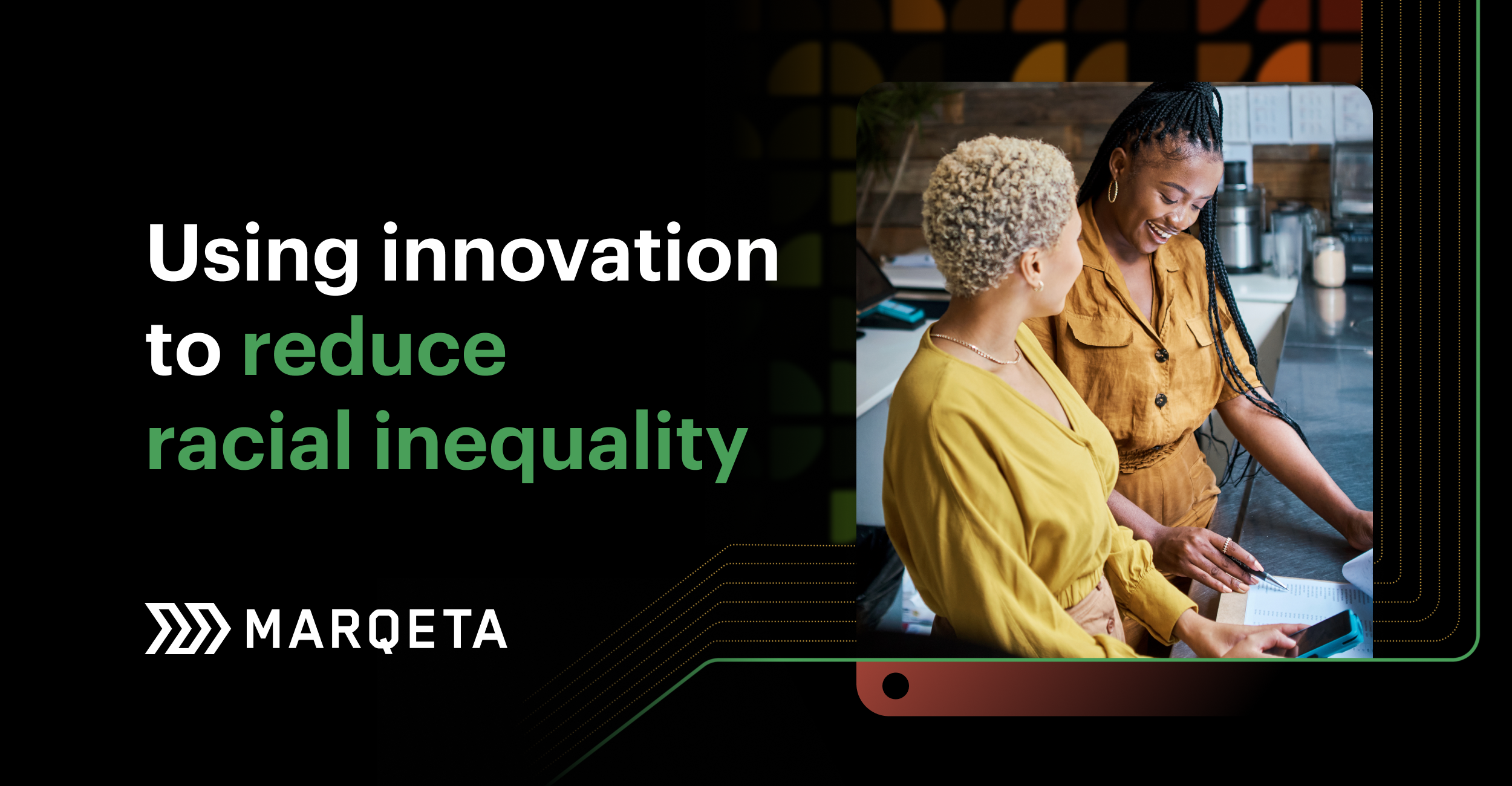Innovation for all: Can new payment products reduce racial inequality in financial services?
One of the big goals of financial services innovation is to open up–or “democratize”– payments. Indeed, Marqeta’s platform has been designed with the aim of enabling anyone to turn a product vision into a commercial reality.
A game-changing example is accelerated wage access. This allows employees early access to earned wages and is seen as a better alternative to costly payday loans. Then there’s buy-now-pay-later payments, which facilitate instant funding at the point of purchase, transforming everyday shopping experiences and enabling people to spread out their spending.
Businesses have also benefited from increased efficiency and faster working capital applications as a result of advances in expense management and B2B lending.
Many companies that began life as tiny startups have gone on to become global household brands embedding payments everywhere. It’s largely thanks to a combination of modern issuer process platforms and creative thinking on the part of entrepreneurs.
Yet while technology has allowed exciting new organizations to enter the financial services sector, it’s important to evaluate the impact this has had on people’s lives. And in particular, has it benefited traditionally marginalized groups?
As Black History Month in the U.S. draws to a close, we wanted to explore the current state of financial inclusivity across America and some of the tech innovations that are creating a more equal world.
Setting the scene: racial economic inequality persists in the U.S.
While 2024 marks 50 years since the Equal Credit Opportunity Act was passed, a vast swath of research shows a wealth gap continues to exist between Americans of color and White Americans.
According to the Federal Reserve’s Economic Well-Being of U.S. Households in 2022 report, personal credit card ownership stood at 71 per cent for Black Americans, rising to 87% for White Americans. And when it came to owing money on that card, 78 per cent of Black Americans carried a balance, compared to 42 per cent of White Americans.
Data from the Urban Institute in 2020/21 showed significant racial disparities in credit scoring, too. People in majority-Black communities experienced the lowest median credit scores and highest debt-in-collection rates, subprime credit score rates and use of expensive payday or non-bank loans. And just three per cent of White Americans are without a checking account, while 13 per cent of Black Americans are classified as being unbanked.
Leveling the playing field: can technology help solve financial inequality?
One answer to this question may lie in the use of non-traditional data in credit decisions. Black Americans, according to Federal Reserve research, are bucking the national trend when it comes to buy-now-pay-later adoption, with 21 per cent using this form of short term lending in 2022 compared to nine per cent of White Americans.This suggests that if traditional lenders adopted a wider range of data, life-enhancing credit could become more accessible in the U.S.
Where next for innovators who care about racial equality?
Last year Marqeta hosted a webinar featuring tech startups specializing in inclusivity solutions. A key theme to emerge during the event, as this blog outlines, was the importance of placing users at the heart of the design process. This means having someone in your team talking to members of a target audience to find out how best to serve them.
Innovators should also look to the payments ecosystem for solutions. Today there are many digital plugins that can support financial inclusivity. It’s easier than ever to build a proposition designed to widen access to financial products.
This really matters in an era of financial challenge for many consumers. Particularly when we consider research by Marqeta partner Plaid, which has shown that Black Americans are more likely to turn to fintech solutions than their White counterparts when facing economic difficulties.

